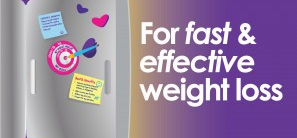
9am to 6.30pm
Telephone / Fax(023) 8841136 / fax: (023) 884 1152
Email
9am to 6.30pm
Telephone / Fax(023) 8841136 / fax: (023) 884 1152
Email


Strep throat is a bacterial throat infection that can make your throat feel sore and scratchy. Compared with a viral throat infection, strep throat symptoms are generally more severe. It’s important to identify strep throat for a number of reasons. If untreated, strep throat can sometimes cause complications. Strep throat is most common between the ages of 5 and 15, but it affects people of all ages. If you or your child has signs or symptoms of strep throat, see your doctor for prompt treatment.

It’s possible for you or your child to have many of these signs and symptoms, but not have strep throat. The cause of these signs and symptoms could be a viral infection or some other kind of illness. That’s why your doctor generally tests specifically for strep throat. It’s also possible to have the bacteria that can cause strep in your throat without having a sore throat. Some people are carriers of strep, which means they can pass the bacteria on to others, but the bacteria are not currently making them sick.
The cause of strep throat is bacteria known as Streptococcus pyogenes, or group A streptococcus.
Streptococcal bacteria are highly contagious. They can spread through airborne droplets when someone with the infection coughs or sneezes, or through shared food or drinks. You can also pick up the bacteria from a doorknob or other surface and transfer them to your nose or mouth.
Several factors can increase your risk of strep throat infection:
Doctors usually diagnose the cause of a sore throat on the basis of a physical exam and lab tests.
During the exam, your doctor looks for signs and symptoms of strep throat, such as fever and enlarged lymph nodes, and will probably use a tongue depressor to get a good look at the throat and tonsils.
Your doctor will check for redness, swelling, and white streaks or pus on the tonsils. There also may be tiny red spots on the soft or hard palate — the area at the back of the roof of the mouth. Although these signs indicate an infection, appearance alone doesn’t indicate whether it’s viral or bacterial. In fact, some viral throat infections look worse than infections caused by streptococcal bacteria.
For that reason, your doctor is likely to use one or more of the following tests to check for the presence of bacteria, including streptococcal bacteria: